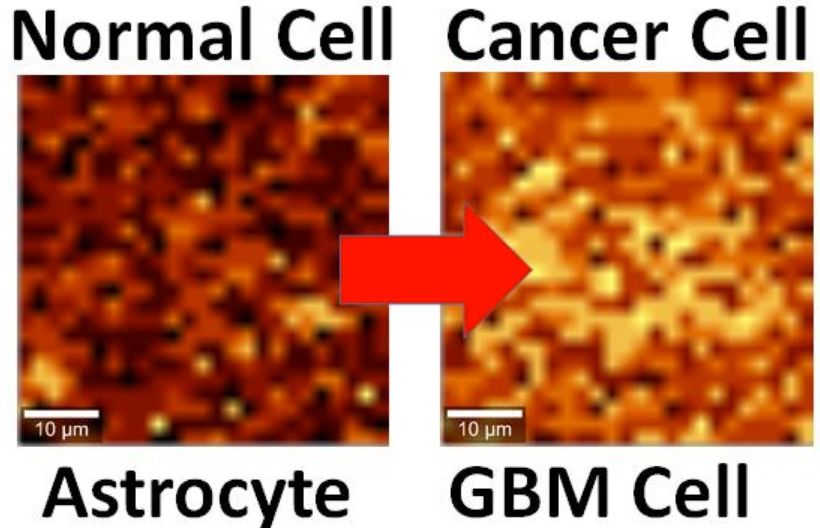Humans’ relationship with technology is growing ever-more intimate. In a sense, we have already become cyborgs, tethered to our external electronic devices, outsourcing to them our memories, our sense of direction, our socializing, our lives. But, if the past year’s technological advancements are any indication, our relationship with technology is going to get a whole lot closer. Technology could one day soon become regularly integrated with our biology to manage disease and augment human ability. Here were some of the biggest breakthroughs of the past year on the cyborg front.
Category: biotech/medical – Page 3,161
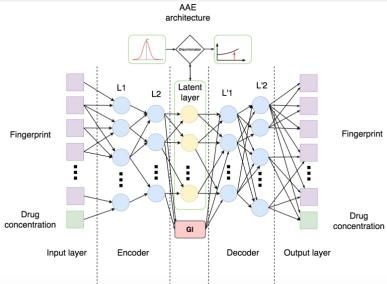
Artificial intelligence to generate new cancer drugs on demand
Summary:
- Clinical trial failure rates for small molecules in oncology exceed 94% for molecules previously tested in animals and the costs to bring a new drug to market exceed $2.5 billion
- There are around 2,000 drugs approved for therapeutic use by the regulators with very few providing complete cures
- Advances in deep learning demonstrated superhuman accuracy in many areas and are expected to transform industries, where large amounts of training data is available
- Generative Adversarial Networks (GANs), a new technology introduced in 2014 represent the “cutting edge” in artificial intelligence, where new images, videos and voice can be produced by the deep neural networks on demand
- Here for the first time we demonstrate the application of Generative Adversarial Autoencoders (AAEs), a new type of GAN, for generation of molecular fingerprints of molecules that kill cancer cells at specific concentrations
- This work is the proof of concept, which opens the door for the cornucopia of meaningful molecular leads created according to the given criteria
- The study was published in Oncotarget and the open-access manuscript is available in the Advance Open Publications section
- Authors speculate that in 2017 the conservative pharmaceutical industry will experience a transformation similar to the automotive industry with deep learned drug discovery pipelines integrated into the many business processes
- The extension of this work will be presented at the “4th Annual R&D Data Intelligence Leaders Forum” in Basel, Switzerland, Jan 24-26th, 2017
Thursday, 22nd of December Baltimore, MD — Scientists at the Pharmaceutical Artificial Intelligence (pharma. AI) group of Insilico Medicine, Inc, today announced the publication of a seminal paper demonstrating the application of generative adversarial autoencoders (AAEs) to generating new molecular fingerprints on demand. The study was published in Oncotarget on 22nd of December, 2016. The study represents the proof of concept for applying Generative Adversarial Networks (GANs) to drug discovery. The authors significantly extended this model to generate new leads according to multiple requested characteristics and plan to launch a comprehensive GAN-based drug discovery engine producing promising therapeutic treatments to significantly accelerate pharmaceutical R&D and improve the success rates in clinical trials.
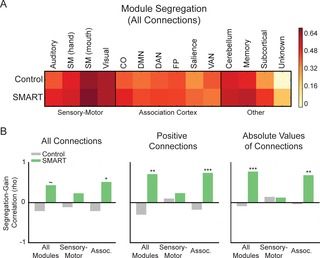
Modular Brain Network Organization Predicts Response to Cognitive Training in Older Adults
Cognitive training interventions are a promising approach to mitigate cognitive deficits common in aging and, ultimately, to improve functioning in older adults. Baseline neural factors, such as properties of brain networks, may predict training outcomes and can be used to improve the effectiveness of interventions. Here, we investigated the relationship between baseline brain network modularity, a measure of the segregation of brain sub-networks, and training-related gains in cognition in older adults. We found that older adults with more segregated brain sub-networks (i.e., more modular networks) at baseline exhibited greater training improvements in the ability to synthesize complex information. Further, the relationship between modularity and training-related gains was more pronounced in sub-networks mediating “associative” functions compared with those involved in sensory-motor processing. These results suggest that assessments of brain networks can be used as a biomarker to guide the implementation of cognitive interventions and improve outcomes across individuals. More broadly, these findings also suggest that properties of brain networks may capture individual differences in learning and neuroplasticity.
Trail Registration: ClinicalTrials.gov, NCT#00977418
Citation: Gallen CL, Baniqued PL, Chapman SB, Aslan S, Keebler M, Didehbani N, et al. (2016) Modular Brain Network Organization Predicts Response to Cognitive Training in Older Adults. PLoS ONE 11(12): e0169015. doi:10.1371/journal.pone.0169015
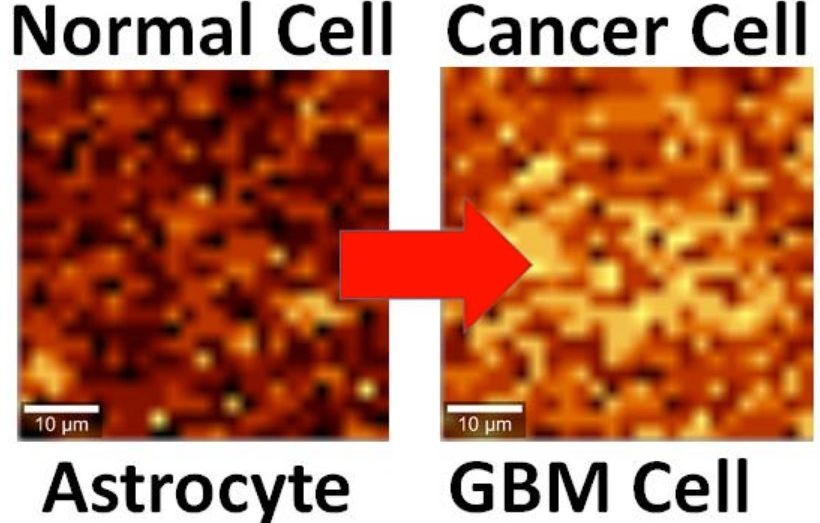
Using graphene to detect brain cancer cells
Graphene has already proven its importance to brain implants as well as other Synbio technology.
By interfacing brain cells with graphene, University of Illinois at Chicago researchers have differentiated a single hyperactive Glioblastoma Multiforme cancerous astrocyte cell from a normal cell in the lab — pointing the way to developing a simple, noninvasive tool for early cancer diagnosis.
In the study, reported in the journal ACS Applied Materials & Interfaces, the researchers looked at lab-cultured human brain astrocyte cells taken from a mouse model. They compared normal astrocytes to their cancerous counterpart, highly malignant brain tumor glioblastoma multiforme.

Young microglia restore amyloid plaque clearance of aged microglia
Rejuvenating the immune system offers hope for Alzheimer’s patients and removal of plaques.
Alzheimer′s disease (AD) is characterized by deposition of amyloid plaques, neurofibrillary tangles, and neuroinflammation. In order to study microglial contribution to amyloid plaque phagocytosis, we developed a novel ex vivo model by co‐culturing organotypic brain slices from up to 20‐month‐old, amyloid‐bearing AD mouse model (APPPS1) and young, neonatal wild‐type (WT) mice. Surprisingly, co‐culturing resulted in proliferation, recruitment, and clustering of old microglial cells around amyloid plaques and clearance of the plaque halo. Depletion of either old or young microglial cells prevented amyloid plaque clearance, indicating a synergistic effect of both populations. Exposing old microglial cells to conditioned media of young microglia or addition of granulocyte‐macrophage colony‐stimulating factor (GM‐CSF) was sufficient to induce microglial proliferation and reduce amyloid plaque size. Our data suggest that microglial dysfunction in AD may be reversible and their phagocytic ability can be modulated to limit amyloid accumulation. This novel ex vivo model provides a valuable system for identification, screening, and testing of compounds aimed to therapeutically reinforce microglial phagocytosis.
CellAge Campaign Q&A: Are You a For-Profit Company? | Lifespan.io
Non-profit research ultimately benefits for-profit companies and is an essential part of the development chain of any therapy.
Companies like Unity Biotech have taken non-profit research and are developing it for-profit, this is the only way that therapies will make it to market and pay for the huge costs involved in development. You may have concerns that our current crowdfunding project is with a for-profit company so here is CellAge to answer this question.
Their campaign can be found at Lifespan.io here:
https://www.lifespan.io/campaigns/cellage-targeting-senescen…ic-biology

Classifying Aging As a Disease: The Role of Microbes
The body is under constant invasion by microbes so rejuvenation of the immune system and reduction of imflammation is a big priority for rejuvenation biotechnology.
Recent publications have proposed that aging should be classified as a disease (Bulterijs et al., 2015; Zhavoronkov and Bhullar, 2015; Zhavoronkov and Moskalev, 2016). The goal of this manuscript is not to dispute these claims, but rather to suggest that when classifying aging as a disease, it is important to include the contribution of microbes.
As recently as ~115 years ago, more than half of all deaths were caused by infectious diseases, including pneumonia, influenza, tuberculosis, gastrointestinal infections, and diphtheria (Jones et al., 2012). Since then, the establishment of public health departments that focused on improved sanitation and hygiene, and the introduction of antibiotics and vaccines allowed for a dramatic decrease in infectious disease-related mortality (Report, 1999). In 2010, the death rate for infectious diseases was reduced to 3% (Jones et al., 2012). Simultaneously, as infectious disease-related mortality rates have decreased, global lifespan has increased from ~30 to ~70 years (Riley, 2005).
Because death rates due to infectious diseases have been reduced to very low levels, we’ve forgotten about the adverse effects of microbes on our existence. The fact is, we live in a microbial world. Although there are currently ~7 billion people, in contrast, the total number of prokaryotes and viruses have been estimated at 1030 and 1031, respectively (Whitman et al., 1998; Duerkop et al., 2014). Even without including other microbes (e.g., fungi, protozoa), humans are outnumbered by more than 1021 to 1! All of these microorganisms aren’t detrimental to human health, but more than 1400 microbial species have been shown to be pathogenic (Taylor et al., 2001).
Deep sea bacteria cured half of all prostate cancer suffers in trial
Bacteria that lives on the ocean floor has been found to cure half of all male prostate cancer sufferers in a London trial. It’s injected into the bloodstream and could replace surgery.
Artificial leaf could make a medicinal mini-factory
Leaves are kind of like nature’s power plants, converting incoming sunlight into energy for the plant to thrive on. Inspired by the real thing, scientists have previously created artificial leaves that function in much the same way as their natural counterparts to produce electricity and even liquid fuels. Now a team at Eindhoven University of Technology (TU/e) is using a similar system to produce chemicals, which could one day lead to solar-powered “mini-factories” that can produce drugs, pesticides and other chemicals almost anywhere.
To mimic the light-capturing molecules in leaves, the researchers turned to luminescent solar concentrators (LSCs), materials seen in solar-harvesting window technology and used to catch and amplify laser beams carrying data in Facebook’s drone-mounted internet projec t. These LSCs absorb incoming light, convert it to specific wavelengths and then guide the photons to the edges of the device.
The TU/e team’s take on the idea was to create a leaf-shaped device, made from a silicon rubber LSC, with a thin channel running through it like the veins in a leaf. As chemicals are pumped through the channel, the LSC material directs sunlight towards it, and the high intensity of the sunlight can trigger a chemical reaction with the liquid in the channel. Essentially, one substance enters, and by the time it comes out the other end, the device will have converted it into a different chemical, which may be useful as a drug, fuel or other agent.
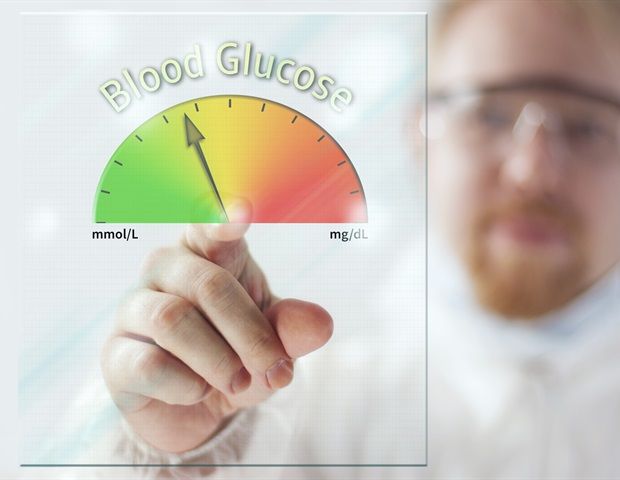
Bionic pancreas system manages blood sugar levels in patients with type 1 diabetes living at home
The bionic pancreas system developed by Boston University (BU) investigators proved better than either conventional or sensor-augmented insulin pump therapy at managing blood sugar levels in patients with type 1 diabetes living at home, with no restrictions, over 11 days. The report of a clinical trial led by a Massachusetts General Hospital (MGH) physician is receiving advance online publication in The Lancet.
“For study participants living at home without limitations on their activity and diet, the bionic pancreas successfully reduced average blood glucose, while at the same time decreasing the risk of hypoglycemia,” says Steven Russell, MD, PhD, of the MGH Diabetes Unit. “This system requires no information other than the patient’s body weight to start, so it will require much less time and effort by health care providers to initiate treatment. And since no carbohydrate counting is required, it significantly reduces the burden on patients associated with diabetes management.”
Developed by Edward Damiano, PhD, and Firas El-Khatib, PhD, of the BU Department of Biomedical Engineering, the bionic pancreas controls patients’ blood sugar with both insulin and glucagon, a hormone that increases glucose levels. After a 2010 clinical trial confirmed that the original version of the device could maintain near-normal blood sugar levels for more than 24 hours in adult patients, two follow-up trials — reported in a 2014 New England Journal of Medicine paper — showed that an updated version of the system successfully controlled blood sugar levels in adults and adolescents for five days. Another follow-up trial published in The Lancet Diabetes and Endocrinology in 2016 showed it could do the same for children as young as 6 years of age.
